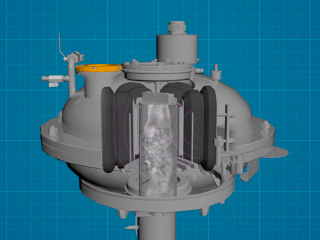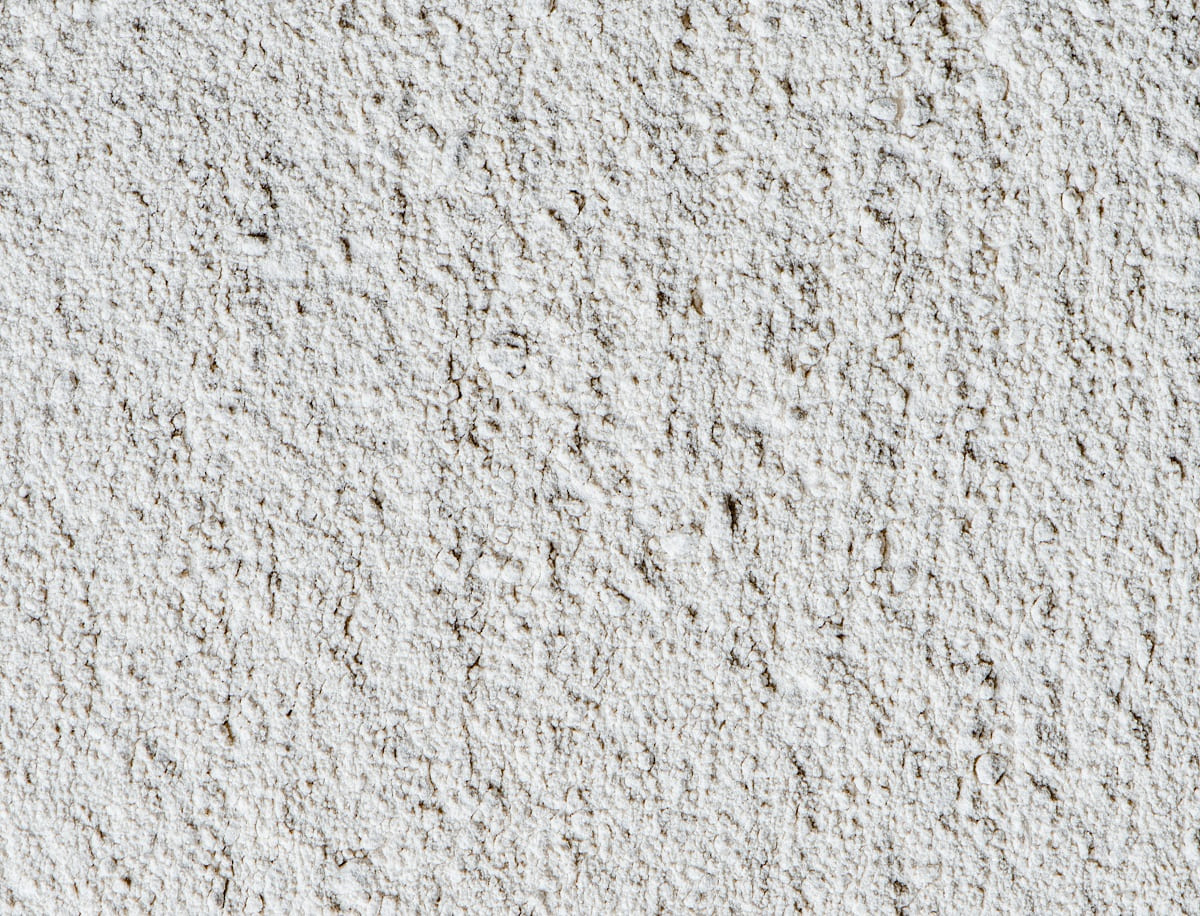Aerated concrete is a type of lightweight concrete which constitutes a porous artificial material made of mineral binders (cement, lime, or gypsum) and a silica aggregate (quartz sand, fly ash, or acidic slags from the metallurgical industry). Aerated concrete production is based on the processes of dispersion, mixing, bloating of a mixture of these ingredients, and its hardening.
When producing the material, it is important to achieve a high degree of activation and uniform distribution of particles of a gas-generating or foaming additive, as well as homogenization and dispersion of mass constituents. GlobeCore vortex layer device (AVS) can be used for these tasks.
Advantages of aerated concrete
The main characteristics of the porous material that influenced its popularity in the construction field:
- High heat-insulating properties
The pores in aerated concrete can take up to 85% of the volume of the material which makes it extremely lightweight and ensures high heat-insulating characteristics. It is distinguished by a better ability to retain heat compared to conventional materials, including brick.
- Usability
Due to regular geometry and a convenient configuration factor, building with concrete blocks is faster and easier compared to cast-in-situ, brick construction. In addition, a special glue rather than a solution is used when laying the blocks. It is advantageous and easy. And the joints which are just up to 3 mm thick do not act as cold bridges, unlike cement interlayers between bricks.
- High strength
Porous blocks are strong enough as for a construction material. Therefore, porous concrete has already become not just an auxiliary alternative to brick, reinforced concrete, but also substantially replaced them in some cases.
Such performance ensured a high popularity of the porous material and its wide range of use.
Scope of use
Basically, the use of aerated concrete is concentrated in the field of construction heat insulation. However, in addition, it is used for walling the buildings and facilities. Depending thereon, the material is classified into heat-insulating, structural heat-insulating, and structural. The volume weight of different types varies from 300 to 1,200 kg/m3.
In general, the use of aerated concrete is common in the following areas:
- heat insulation of reinforced concrete inter-floor coverings, attics, and walls;
- construction of partitions, enclosing structures;
- construction of load-bearing walls, supports in low-rise houses, buildings.
Aerated concrete is used to build modern cottages, household structures, industrial sites, other buildings and facilities. It is used in the construction of residential complexes, residential areas, and multi-storey buildings.
Taking into consideration such prospects, aerated concrete production continues to develop. This material becomes more and more popular in the market both in the field of private, low-rise construction, and in the construction of large properties by construction companies. Therefore, it is reasonable to establish aerated concrete production at both a small construction materials plant and a large enterprise.
Aerated concrete production — conventional technologies
There are several ways to produce aerated concrete. Depending thereon, the molds are hardened by autoclaving or non-autoclaving method, and obtaining the mixture porousness is based on gas formation, foaming, or aeration. As a result, we obtain the aerated concrete of respective types:
- gas concrete;
- foam concrete;
- aerated product.
Thus, the technologies mainly differ in the method of obtaining the porousness of the material and the method of its hardening. For instance, gas concrete is prepared by mixing all the ingredients in dry and wet form using mixers and mills after which the raw stuff is placed in molds where further pore formation occurs. And foam concrete is made by preparing a mixture by means of mixers with its simultaneous bloating after which the already foamed product is sent to molds.
Let us discuss the efficiency of engaging AVS in the process of aerated concrete production drawing on the example of a popular technology using a gas-generating agent. First, let us analyze the problems that the new equipment from GlobeCore will help to solve.
Disadvantages of classic aerated concrete production technology
The popular aerated concrete production technology involves the use of a gas-generating agent by means of which the mixture is bloated. As a rule, aluminum powder is used as an ingredient of the kind. During the reaction with a water solution of calcium hydroxide, pore-forming oxygen is released.
The more uniformly the pores are located in concrete and the smaller they are in size, the higher the performance of the final material is. In order to attain that, it is important to distribute the gas-generating agents as uniformly as possible over the entire volume of the mixture, achieving a high degree of its dispersion. In addition, the quality is influenced by the amount of active CaO in prepared mass.
In order to achieve a high porosity of the material, the initial ingredients (sand, lime) can be processed and additionally ground. In this case, separate wet grinding of sand or combined dry grinding of ingredients can be used.
Additional processing of gas-generating agent involves partial removal of paraffin film on the surface of particles. It is done by mixing that with water and surfactants. However, conventional mixers are distinguished by low efficiency in terms of paraffin film removal.
In addition, while preparing the gas-generating agent, particles of aluminum powder form lumps in some places. In the future, these accumulations of particles cause an excessive, uneven release of oxygen during a chemical reaction — large pores and voids are formed. As a result, the concrete product is distinguished by low strength in that place and may crack.
And with insufficient gas release, up to 25% of lime is added to the mixture. Furthermore, lime helps in achieving the required concrete strength before the end of gas generating processes which is necessary for obtaining a porous structure.
Thus, the main problems of the conventional aerated concrete production technology include:
- formation of void pockets, cracks in the material;
- insufficient gas output for pore formation;
- low homogeneity of the mixture.
The use of GlobeCore vortex layer device helps in solving the problems associated with aggregation of particles, insufficient activity and nonuniform distribution of gas-generating agent over the mass volume.
Aerated concrete production by means of a vortex layer device

The mixture is processed in a non-magnetic operating chamber through the space of which ferromagnetic needles move with high intensity due to the influence of an electromagnetic field created by an inductor — a vortex layer is generated. These needles turn into diminutive mixers and crushers. As a result of such processing, we obtain a homogeneous mass with a high degree of dispersion and activation of processed substances and mixtures. Mixing, activation, and grinding occur when driven by an electromagnetic field, acoustic vibrations, high local pressure, and electrolysis.
The efficiency of preparing a suspension from aluminum powder by means a vortex layer device was studied and described by D.D. Logvinenko. Table 1 shows changes in the physical and mechanical properties of gas silicate obtained on the basis of a gas-generating agent processed and unprocessed in AVS.
Table 1
|
Experiment N o. |
Suspension preparation conditions | Capacity of AVS-100 device, L/h | Mechanical properties of gas silicate | |||||
| After processing the suspension in AVS | After processing the suspension in a conventional mixer | |||||||
| Volume weight, γ, g/cm3 | Ultimate chipping strength, σс*10-5, Pa | Strength-weight ratio | Volume weight, γ, g/cm3 | Ultimate chipping strength, σс*10-5, Pa | Strength-weight ratio | |||
| 1 | Aluminum powder — 100% in relation to the estimated quantity | 120 | 385 | 18.7 | 2.56 | 396 | 15.2 | 2.03 |
| 377 | 10.3 | 1.47 | 419 | 79.5 | 0.92 | |||
| 414 | 11.8 | 1.41 | 438 | 10.8 | 1.14 | |||
| 2 | Aluminum powder — 90% in relation to the estimated quantity | 950 | 386 | 14.5 | 1.85 | 437 | 14.1 | 1.51 |
| 427 | 15.2 | 1.70 | – | – | – | |||
| 375 | 12.3 | 1.80 | – | – | – | |||
Aerated concrete production using a gas-generating agent processed in AVS made it possible to obtain a material with the strength higher by 10–30% than that of a conventionally made sample. The quality factor of aerated concrete increased by 20–60% compared to initial data.
Moreover, the improved aerated concrete production technology became more cost-effective. The gas-generating agent consumption was reduced by 10%, and lime was used less by 2%. At the same time, the final product did not become heavier; quite the contrary, its volume weight decreased. The strength of blocks increased.
It is not unlikely that the physical and mechanical properties of aerated concrete improved due to processing the lime-sand and cement-sand mixtures in AVS. It is associated with activation of SiO2 particles caused by formation of active centers on the surface of sand grains.
Advantages of a vortex layer device in aerated concrete production
Aerated concrete production using AVS involves optimization of technological processes in the line accompanied by improvement of the product quality due to more efficient processing of raw stuff and mixtures. It is achieved owing to the following advantages of AVS:
- Versatility
A vortex layer device is suitable both for activating and preparing a suspension from a gas-generating agent, as well as for mixing, dispersing, and activating the remaining ingredients of a cement-sand or lime-sand mixture. The equipment is suitable for wet grinding, mixing of ingredients, activation, pulverization of sand, and combined dry mixing of aerated concrete ingredients.
- Improved quality of products
As a result of preparing the ingredients and additives in AVS, we obtain aerated concrete with the best physical and mechanical characteristics.
- Cost-effectiveness
In addition to the fact that the equipment is more cost-effective than conventional units in terms of energy consumption, it allows reducing the consumption of ingredients for bloating the mass and decreasing the processing time of mixtures.
- Usability
A vortex layer device can be integrated into the existing aerated concrete production line. Furthermore, it is not required to build any pedestals and additional structures for installation, and the device is quite compact.
Aerated concrete production by means of a vortex layer device allows obtaining a higher quality construction material and optimizing the technological processes which has an effect on a decrease in the cost price of products and an increase in the volume thereof.



